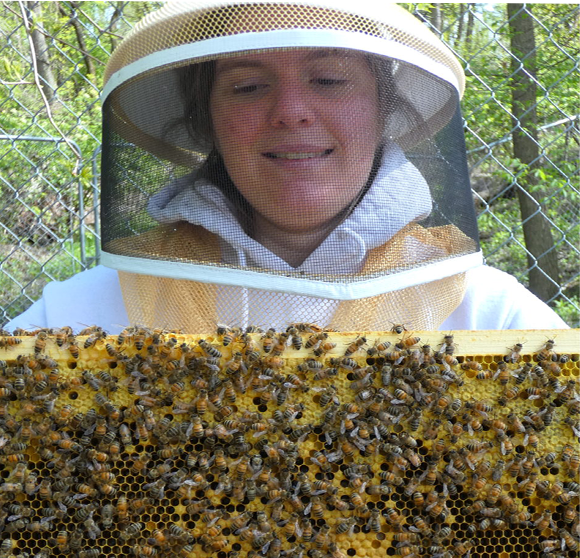Faculty Profiles

Morgan Carr-Markell
I am a behavioral ecologist, and my research focuses on honey bee foraging behavior and communication, especially the honey bee waggle dance. The waggle dance is a fascinating behavior, unique to bees in the genus Apis. It allows honey bee foragers to convey the location of rewarding patches of flowers to their sisters, and we can use it to better understand honey bee foraging preferences. I am also broadly interested in pollinator conservation and social insect biology. I teach courses on introductory biology, entomology, social insects, animal behavior, and programming for biologists, and am committed to creating a welcoming and equitable environment in my classes and my research group.
Outside of work, I enjoy reading/watching sci-fi and fantasy, playing board games, taking photos of insects and flowers, and a wide variety of craft projects.
- PhD, University of Minnesota
- MS, University of Illinois at Urbana-Champaign
- BA, Wellesley College
- Behavioral Ecology
- Animal Behavior
- Entomology
- Apiculture
- Foraging behavior
- Communication
- Social Insects
- BIO 190 Insects and Society
- BIO 156L Foundations of Ecology and Evolution Lab
- BIO 155L Foundations of Molecular Biology Lab
- Carr-Markell, M.K., and Spivak, M. (2021) External validation of the new calibration for mapping honey bee waggle dances. Animal Behaviour. DOI: 10.1016/j.anbehav.2020.12.006
- Carr-Markell, M.K., Demler, C.M.*, Couvillon, M.J., Schürch, R., Spivak, M. (2020) Do honey bee (Apis mellifera) foragers recruit their nestmates to native forbs in reconstructed prairie habitats? PLOS ONE 15(2): e0228169. DOI: 10.1371/journal.pone.0228169
- Corby-Harris, V., Bowsher, J., Carr-Markell, M.K., Carroll, M., Centrella, M. et al. (2018) Emerging themes from the ESA symposium entitled “Pollinator Nutrition: Lessons from Bees at Individual to Landscape Levels.” Bee World. DOI:10.1080/0005772X.2018.1535951
- Carr-Markell, M.K. and Robinson, G.E. (2014) Comparing reversal-learning abilities, sucrose responsiveness, and foraging experience between scout and non-scout honey bee (Apis mellifera) foragers. Journal of Insect Behavior. 27(6): 736-752. DOI: 10.1007/s10905-014-9465-1
- Heath, K.D., Bagley, E., Berkey, A.J.M., Birlenbach, D.M., Carr-Markell, M.K. et al. (2014) Amplify the signal: graduate training in broader impacts of scientific research. BioScience. 6(6): 517-523. DOI: 10.1093/biosci/biu051
- Carr-Markell, M.K., McDonald, K.M., and Mattila, H.R. (2013) Intracolonial genetic diversity increases chemical signaling by waggle-dancing honey bees, Apis mellifera. Insectes Sociaux. 60(4): 485-496. DOI: 10.1007/s00040-013-0315-5
- Entomological Society of America
- Animal Behavior Society
- International Union for the Study of Social Insects
- American Association of Professional Apiculturalists
